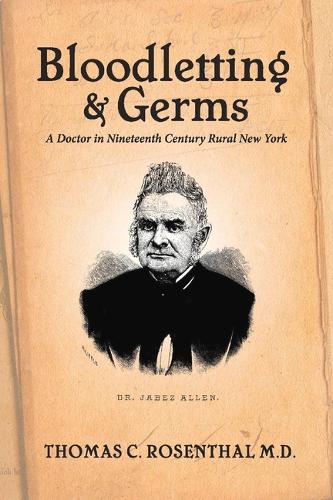
Bloodletting and Germs: A Doctor in Nineteenth Century Rural New York
(Paperback)
Publishing Details
Bloodletting and Germs: A Doctor in Nineteenth Century Rural New York
By (Author) Thomas Rosenthal
BookBaby
BookBaby
29th October 2020
United States
Classifications
Physical Properties
Paperback
348
Width 152mm, Height 228mm, Spine 22mm
553g
Description
Bloodletting and Germs will change the way you think about medical practice.
Imagine you are a patient in 1840. You're sick and your village doctor has little more to offer than letting blood and purging your bowels. Or think of being the doctor, repeatedly staring at death, seeking cures, and holding the hand of a feverish child.
On his way to America's frontier in 1834 the newly graduated doctor, Jabez Allen MD, stops for one night in an upstate New York village. He meets a teacher, a sick child, a young socialite abolitionist, and stays a lifetime.
Millicent, the abolitionist, becomes Dr. Allen's wife. When they later employ Civia, a runaway slave, as a wet nurse they discover a woman of ever hopeful outlook and unexplored talents who becomes indispensable to Dr. Allen's medical practice.
Millicent and Civia and force Dr. Allen to confront nineteenth century medical theories labeling Negros as physiologically inferior. When the 1850 Fugitive Slave Act results the arrest of Civia and her family, the local Underground Railroad arranges their escape to Canada as the nation yields to Civil War.
Through it all, patients force Dr. Allen to deal with the contagions of his day, including the cholera that drains life from President Millard Fillmore's daughter, the very man who signed the Fugitive Slave Act.
Dr. Allen is drawn to investigate a typhoid outbreak in a nearby village. Joined by Dr. Austin Flint, their discoveries result in three scientific papers used as an investigative model by John Snow and referenced in Snow's 1855 treatise on London Cholera.
Dr. Allen remains dedicated to his village, is elected President of his county's Medical Society, makes the acquaintance of nationally known medical scientists, and participates in the 1878 AMA meeting where organized medicine argues the scientific foundation for the germ theory.
Bloodletting and Germs is a historical novel written as Dr. Allen's memoir. Citing over four hundred sources, it is true to the events of Dr. Allen's life and the forces that changed medical care in the nineteenth century.
The characters come alive as you're embraced by this well-paced story. Dr. Allen teaches us about managing the unknown and being a small-town hero. It puts humanity's face on a period of profound scientific and social transformation.
Author Bio
Thomas C. Rosenthal M.D. practiced family medicine and geriatrics in both rural and urban Western New York for 40 years. He chaired the Department of Family Medicine at the Jacobs School of Medicine and Biomedical Science, University at Buffalo, edited the Journal of Rural Health and FP Audio, authored numerous peer reviewed scientific papers, edited a textbook of geriatric medicine and received teaching awards from the National Rural Health Association and the New York State Academy of Family Medicine. This is his first historical novel.
